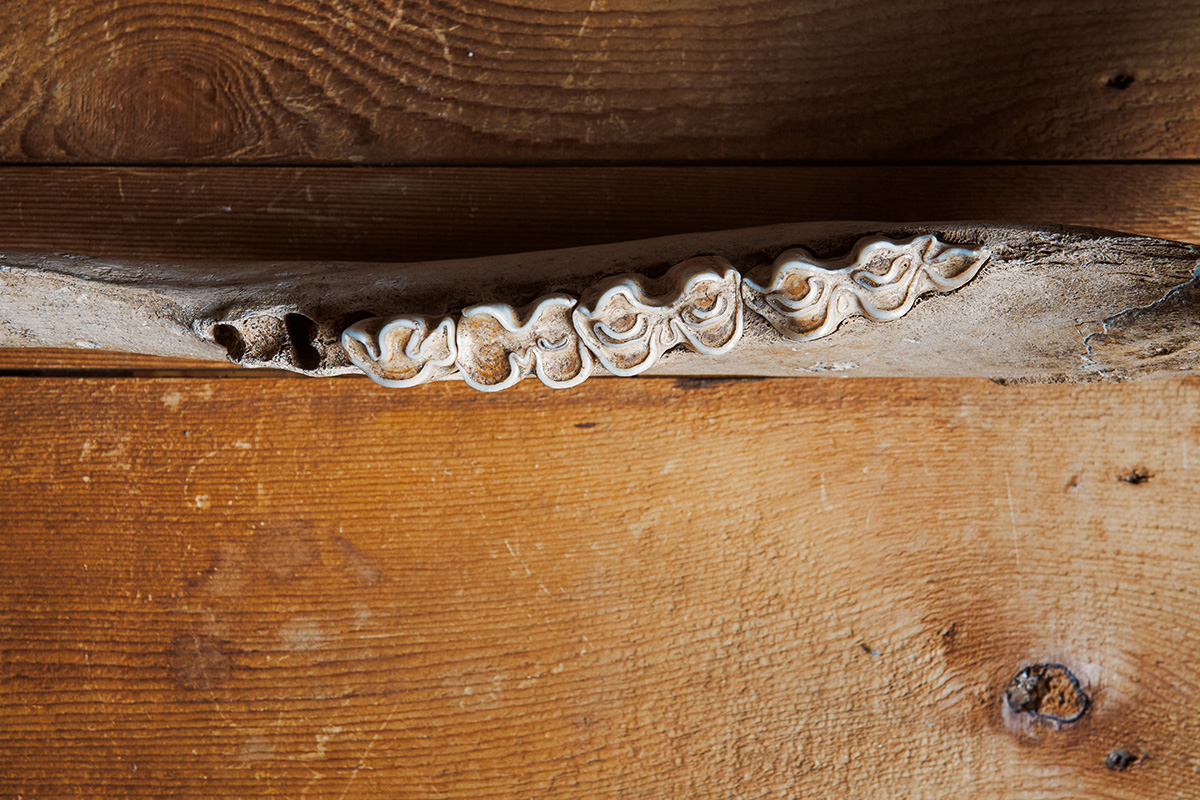Fossils of Rockie’s vintage often are found in the Hill Country, Hester noted. Some of them date back to B.C. times, thousands of years ago.
The museum plans to have a souvenir book on the excavation available for sale to visitors, said Darlene Oostemeyer, who chairs the museum board.
“If we can find something that will be cute, we’ll think on that,” she laughed. “But I don’t want to be cheesy

While fishing along Rocky Creek in Burnet County, Ryan Murray caught a big one.
At least from a phylogenetic standpoint, one might say the 1,300 to 1,800 pound American Bison, named Rockie that he dug up on his parent’s north Burnet County ranch, is a fish.
The biologists who study phylogeny say Rockie is mammal, and all mammals and birds are reptiles and all three are fish.
One day in late August of 2013, Murray saw what looked like a piece chalk along the Rocky Creek bed.
Digging down into the earth for over two days, he found what he thought might be two leg bones.
Realizing these could be fossils, Murray took his findings to a paleontology open house at The University of Texas at Austin, where he met with Dr. Tom Hester, a Marble Falls anthropologist.
They organized a scientific dig that included Murray, Hester and Kenneth Bader, a fossil preparer at UT Austin’s Jackson School of Geosciences.
Bader devoted over 200 hours of work to stabilize and restore the 700 year old specimen.
The female American Bison nicknamed for the creek by which she died will be on display at The Falls of the Colorado Museum in Marble Falls in October.
Bader will discuss how Rockie, who is estimated to be seven years old when she died, may have been killed by arrows shot by Native Americans.
Hester said three fragments of an arrowhead that “sort of fit together” were found near her remains.
The fossils will be displayed in a glass case as Rockie was found – lying down on her side. Bader said her bones are too fragile to mount in an “in life” position.
Murray also will participate.
The display will include excavation photos and other artifacts that date back to that era, including arrowheads donated by Hester.
Carbon dating tests run by The University of Texas – San Antonio show that her remains date between 1308 and 1424.
Ancient bison roamed North America as much as two million years ago, well before European settlers arrived on the continent, researchers believe. Modern bison today are about two thirds the size of predecessors such as Rockie and have smaller horns.
Rockie was among the bison using a migration corridor that stretched down North America, through the Great Plains to Texas’ Edwards Plateau.
Fossils of Rockie’s vintage often are found in the Hill Country, Hester noted. Some of them date back to B.C. times, thousands of years ago.
The museum plans to have a souvenir book on the excavation available for sale to visitors, said Darlene Oostemeyer, who chairs the museum board.
“If we can find something that will be cute, we’ll think on that,” she laughed. “But I don’t want to be cheesy.”


